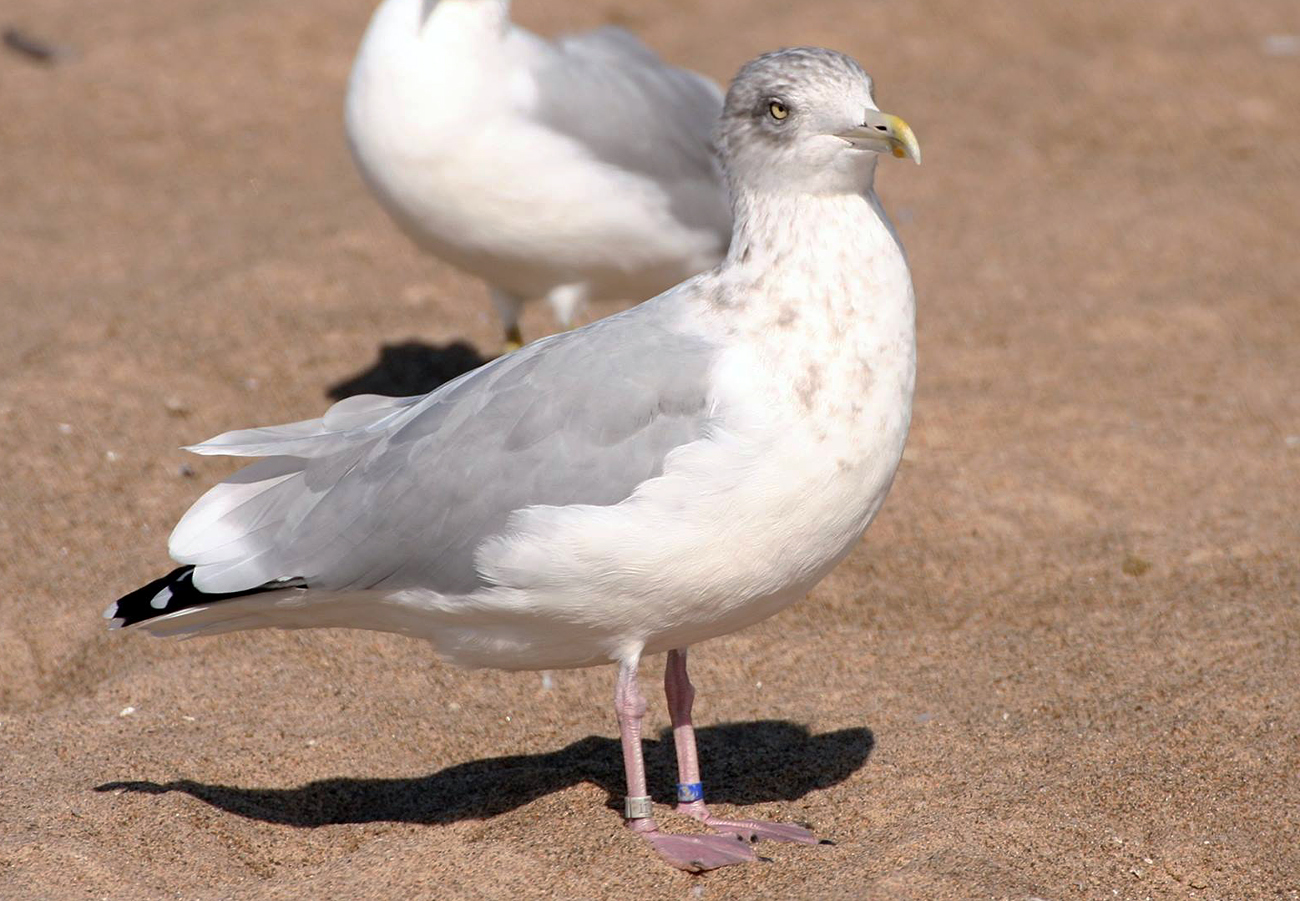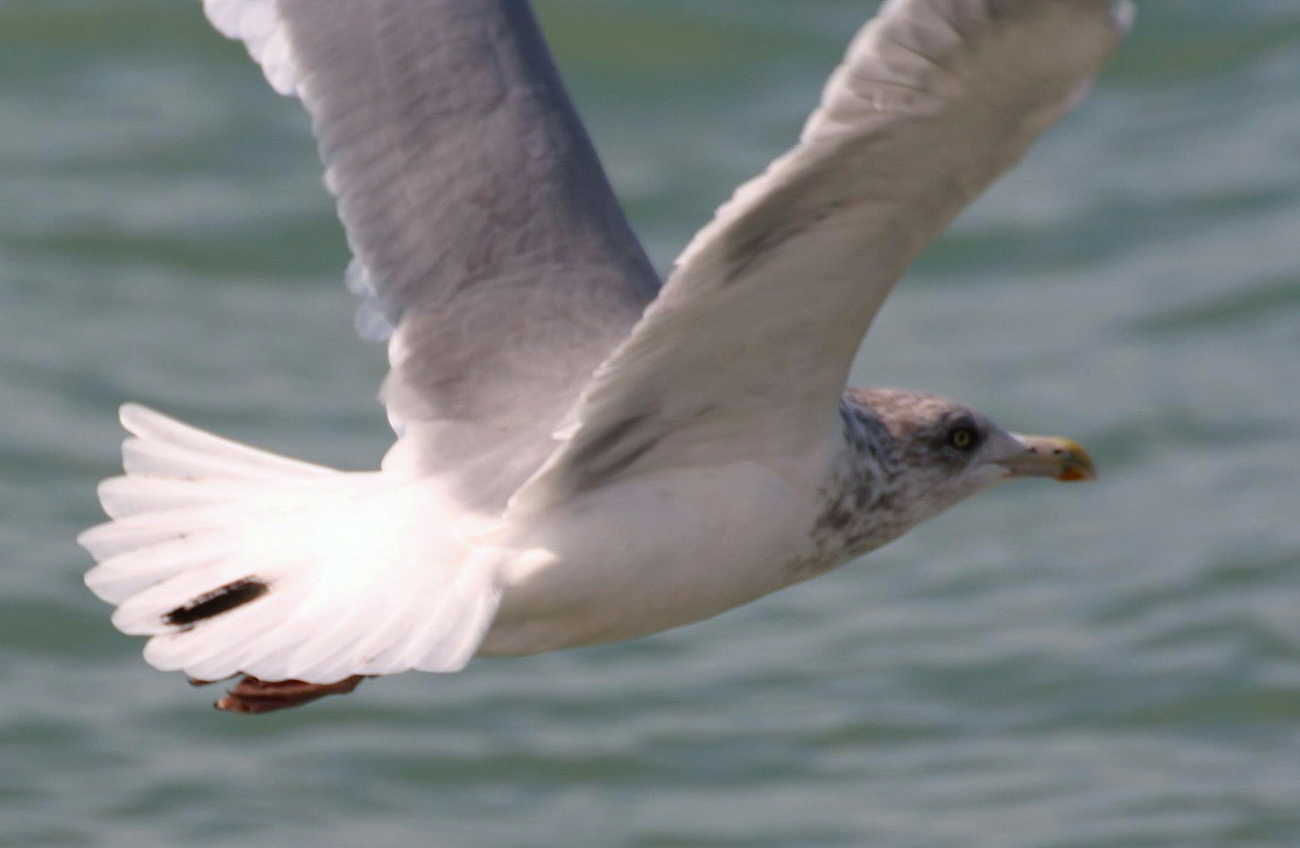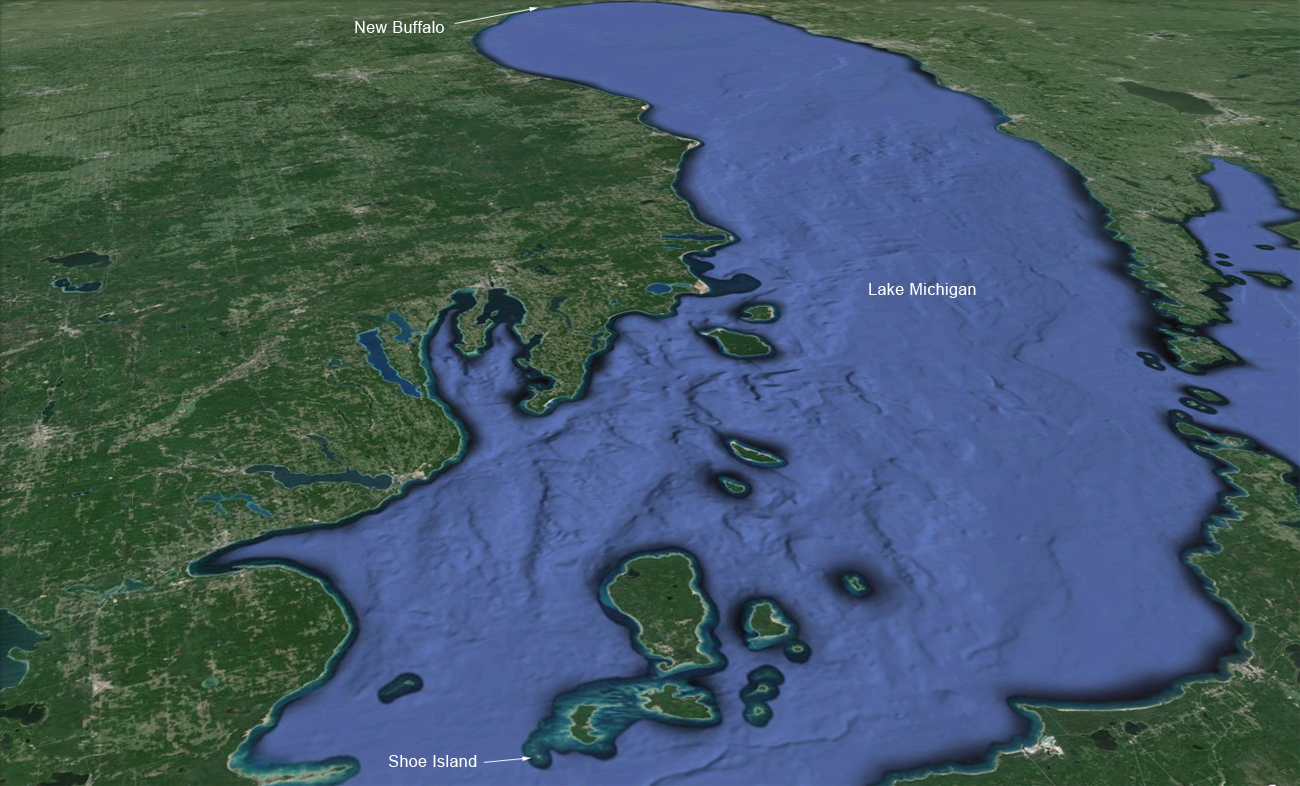 American Herring Gull (smithsonianus)
American Herring Gull (smithsonianus)
(last update: October 30, 2015)
American Herring Gull (smithsonianus) 1146-61591 4th cycle (4CY), September 11 & 26 2015, New Buffalo, Berrien County, Michigan. Picture: Andrew Theus & Amar Ayyash.
Band number 1146-61591, species: "Herring Gull", banded on June 06 2012, on Shoe Island, Michigan Islands Refuge, Charlevoix county, Michigan (see map below). This bird also had a uncoded blue color marker on the left leg.
In the New Buffalo population, most of the adults are "young" adults, that have come from northern Lake Michigan. Maybe these northern colonies are so dense up, that some birds are transferring out. The food source in New Buffalo is a valuable one too, especially being so close to the lake.
below: American Herring Gull (smithsonianus) 1146-61591 4th cycle (4CY), September 26 2015, New Buffalo, Berrien County, Michigan. Picture: Andrew Theus.
P7 fully grown. This bird is finishing up its 4th prebasic molt, it is going into its 4th winter. It had an interesting dark central tail-feather; all these tail-feathers, including the left central tail-feather showing black, are new (4th basic). Of course it would be very very interesting to see if this individual also develops black markings on some secondaries (but we have to wait another 3 weeks....)!


below: American Herring Gull (smithsonianus) 1146-61591 4th cycle (4CY), September 11 2015, New Buffalo, Berrien County, Michigan. Picture: Amar Ayyash.
What could well be the same bird was already present on September 11th. That time the code on the metal band was not read, the bird remained too distant. For Amar who is keen on finding banded birds, this was the first time he saw a small plastic blue band on Lake Michigan. Maybe it's the same bird?
Adult plumage overall in this resting bird. Complete moult: P6 fully grown, P10 old.

Google Earth image.
Looking south over Lake Michigan, with the native colony on Shoe Island in the north of the Lake, and an arrow to New Buffalo in the far south of the Lake, which is a distance of about 475 KMs.
